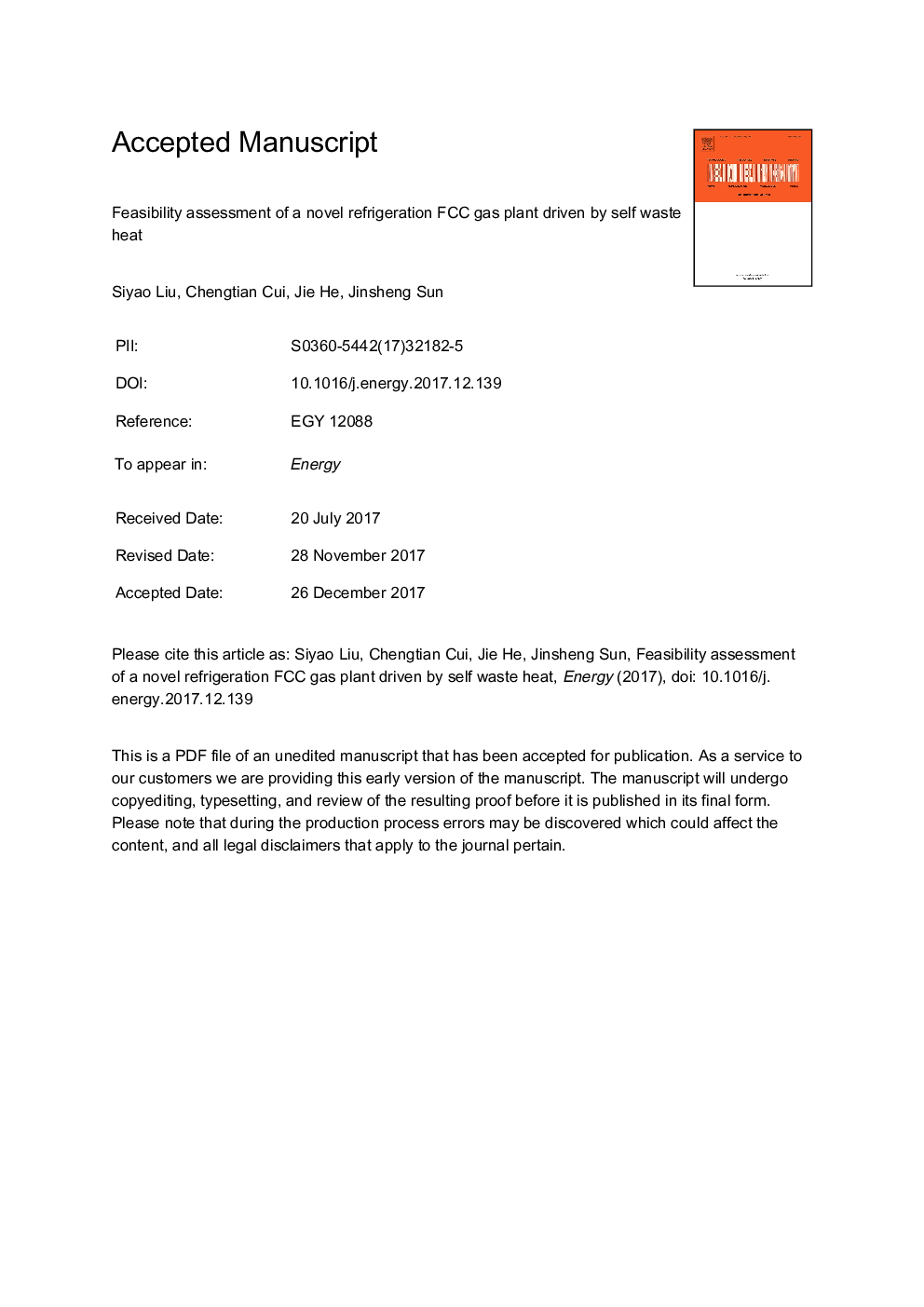| Article ID | Journal | Published Year | Pages | File Type |
|---|---|---|---|---|
| 8072207 | Energy | 2018 | 41 Pages |
Abstract
Fluid catalytic cracking (FCC), an important post-processing, converts wet gas and crude gasoline into dry gas, LPG and stabilized gasoline in its gas plant. On-site dry gas from the absorber contains residual LPG at absorption temperatures higher than requirement because of very limited refrigeration capacity of cooling water (CW). Whereas this LPG lost co-exists with that of waste heat sources in the same unit, potentially capable of generating deeper chilling energy than CW to decrease absorption temperature. This context triggers heat integration for refrigerated FCC gas plant scheme through self waste heat recovery, also beneficiary from improved product yield. The target requirement helps screen out two candidates from a variety of possible methods: organic Rankine cycle with compression refrigeration (ORC-CR) and absorption refrigeration (AR). Feasibility of these two pathways was simulatively assessed, by Aspen Plusâ¢, to demonstrate the superiority of AR over ORC-CR in efficiency at the optimum cooling temperature of 15â¯Â°C. Both operations decrease 10.4% hot utility while enlarge 0.75% LPG and 1.43% gasoline yield, respectively. This work raises the concern about the refrigerating option instead of the heating one by compression, when utilizing low-grade heat resource, for higher energy efficiency and unit productive performance simultaneously.
Related Topics
Physical Sciences and Engineering
Energy
Energy (General)
Authors
Siyao Liu, Chengtian Cui, Jie He, Jinsheng Sun,
